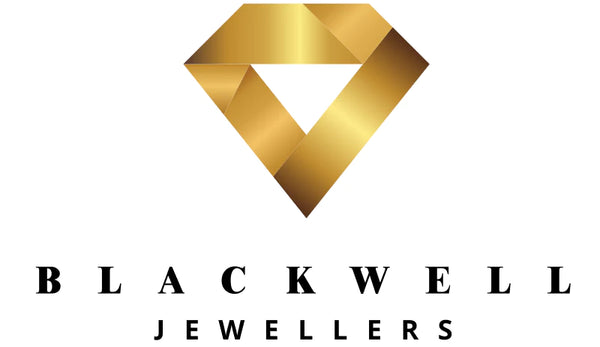Gold has always been one of the most trusted and desirable materials in jewellery — but with its popularity comes a problem. Fake gold is everywhere. From high street bargains that aren’t what they seem, to online listings that bend the truth, thousands of people in the UK are caught out every year. And the truth is, fake gold can look very convincing.
The problem isn’t just about being ripped off financially. Fake gold jewellery often tarnishes, discolours your skin, or even causes allergic reactions. Worse still, if you think you’re investing in real gold but it turns out to be fake, you could lose hundreds or even thousands of pounds.
The good news? There are simple ways to check whether your jewellery is genuine. Some of these tests you can do at home, while others are best left to professionals. Either way, knowing what to look for will give you peace of mind and protect your money.
In this blog, we’ll show you the most reliable ways to spot fake gold, from checking hallmarks and doing the magnet test, to professional testing methods used by jewellers. By the end, you’ll know the key warning signs and how to avoid being tricked.

“Fake gold can look convincing — but with the right tests, you’ll know the difference.”
Test 1: Check for Hallmarks
The first and easiest way to spot fake gold jewellery is to look for a hallmark. In the UK, every genuine piece of gold above 1 gram in weight must, by law, carry a hallmark from an official assay office. This tiny stamp confirms both the metal and its purity.
Where should you look? On rings, the hallmark is usually stamped on the inside of the band. On chains or bracelets, it’s often found on the clasp. You’ll see numbers such as 375 (9ct), 585 (14ct), 750 (18ct), or 916 (22ct) — these show the percentage of pure gold in the piece. Alongside the numbers, you’ll normally see a symbol from the assay office (such as London or Birmingham).
But here’s the catch: fake gold can still be stamped. Some cheap imitations carry fake marks that look real at first glance. That’s why it’s important to check carefully. Real hallmarks are clean, sharp, and detailed. Fake stamps are often shallow, blurred, or inconsistent.
If you’re ever unsure, a jeweller can confirm the hallmark for you with proper testing.

“A hallmark is your first clue — but always check carefully for fakes.”
Test 2: Magnet Test
A quick and simple way to check your jewellery at home is the magnet test. Real gold is not magnetic, so if your chain, ring, or bracelet sticks firmly to a magnet, it’s a clear sign it isn’t solid gold.
This test works because many fake gold items are made from cheaper base metals like steel or nickel, which are magnetic. If those metals are hiding underneath a thin layer of gold plating, the magnet will reveal the truth straight away.
That said, the magnet test isn’t perfect. Some fake alloys won’t react, and some real gold jewellery may contain small amounts of other metals that cause a slight pull. So treat this as a quick first check, not the final word.

“If your jewellery sticks to a magnet, it’s not solid gold.”
Test 3: Density / Weight
One of the easiest ways to spot fake gold is by how it feels in your hand. Real gold is a dense, heavy metal. Even a small piece will feel weighty compared to fakes made from brass, aluminium, or other cheap alloys.
A quick trick is to compare your item to another piece of jewellery you know is genuine. For example, if you’ve got a 9ct gold ring at home, compare it to the one you’re testing. If the suspect piece feels unusually light for its size, that’s a big warning sign.
Jewellers take this test a step further by weighing the item on precision scales and measuring its density. Every metal has a unique density, and gold’s is much higher than most imitations. That makes weight a reliable clue when checking authenticity.
Of course, you need experience and the right tools to be 100% sure, but trust your instincts — if it feels too light, it probably is.

“Real gold has a noticeable weight — fakes usually feel too light.”
Test 4: Acid Test & Professional Testing
When you want certainty, it’s time to move beyond at-home tricks and let a jeweller step in. The traditional method jewellers have used for decades is the acid test. Here’s how it works: a small scratch is made on a testing stone and different strengths of acid are applied. Real gold reacts differently from fake metals or plated pieces, and the result is clear in seconds.
It’s fast and reliable, but it’s not something you should try at home. The acids are dangerous if not handled properly, and without the right tools you could damage your jewellery. That’s why it’s best left to professionals.
Today, many jewellers also use XRF (X-ray fluorescence) machines, which scan the metal without scratching it. This method gives an instant, highly accurate reading of the metal’s content — showing exactly how much gold is present and whether it’s mixed with anything else.
If you’re buying, selling, or insuring jewellery, professional testing is the only way to get a result you can rely on. It takes out the guesswork and gives you confidence that what you have is the real thing.

"Professional testing — the safest and most accurate way to confirm real gold.”
Protect Yourself from Fake Gold
Fake gold jewellery can look convincing, but once you know the signs, it’s much easier to protect yourself. From checking for hallmarks and using a simple magnet test, to weighing your piece and having it professionally tested, these steps can save you from costly mistakes and disappointment.
The key thing to remember is that genuine gold will always hold its value, while fakes will not. If something feels too light, reacts to a magnet, or doesn’t have a clear hallmark, treat it with caution. And if you’re ever in doubt, the smartest move is to have it checked by a trusted jeweller. That way, you’ll know for sure and avoid being caught out.
At Blackwell Jewellers, we’ve tested thousands of pieces over the years. We can confirm authenticity, explain purity, and give you an accurate valuation — so you know exactly what’s in your hand.
Don’t risk it — protect yourself, your money, and your jewellery box with the right knowledge.




